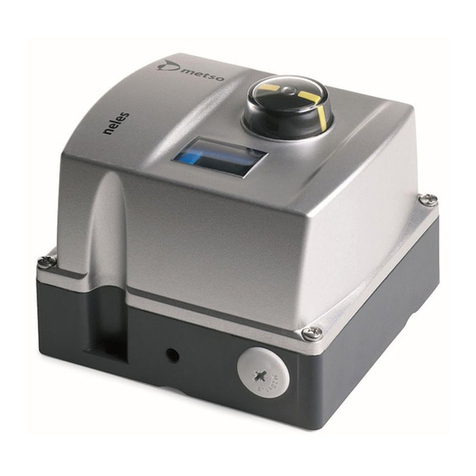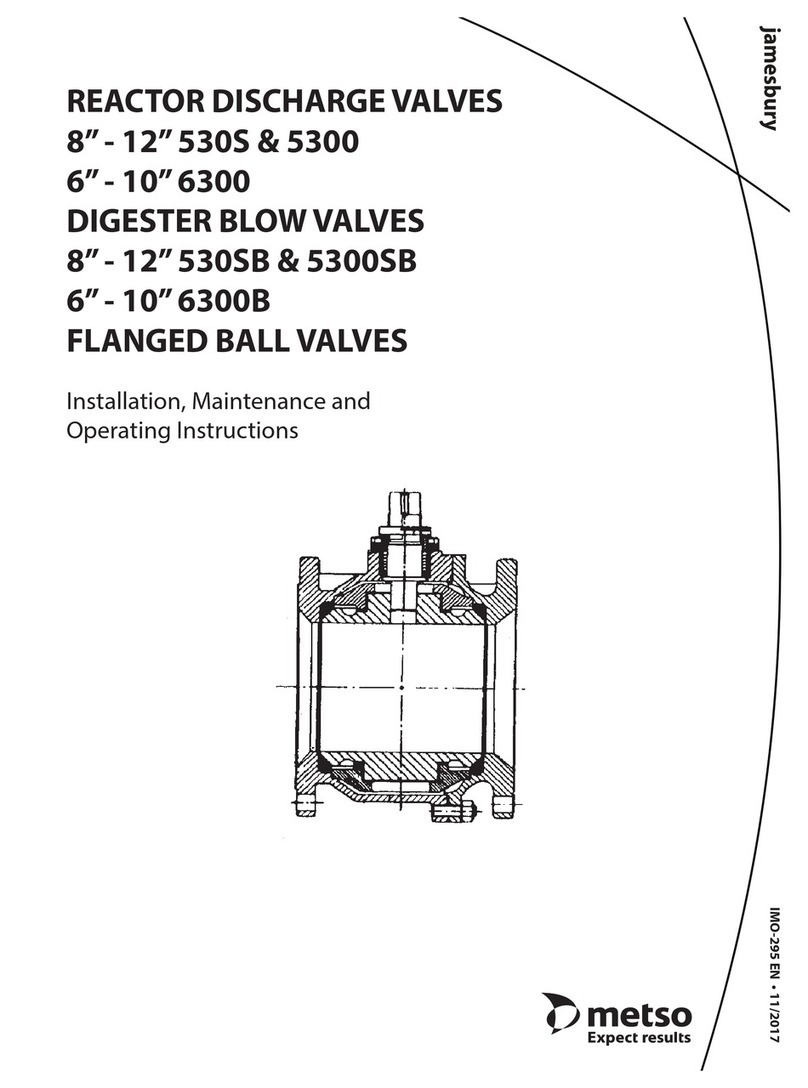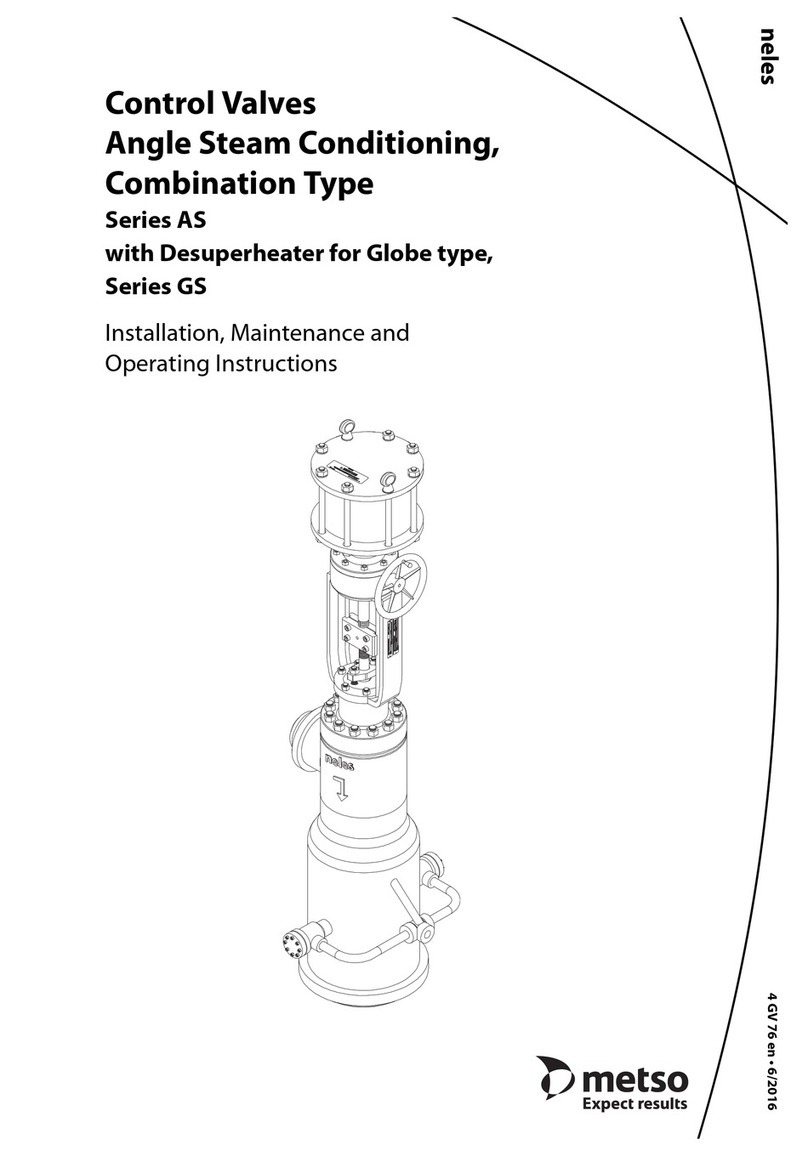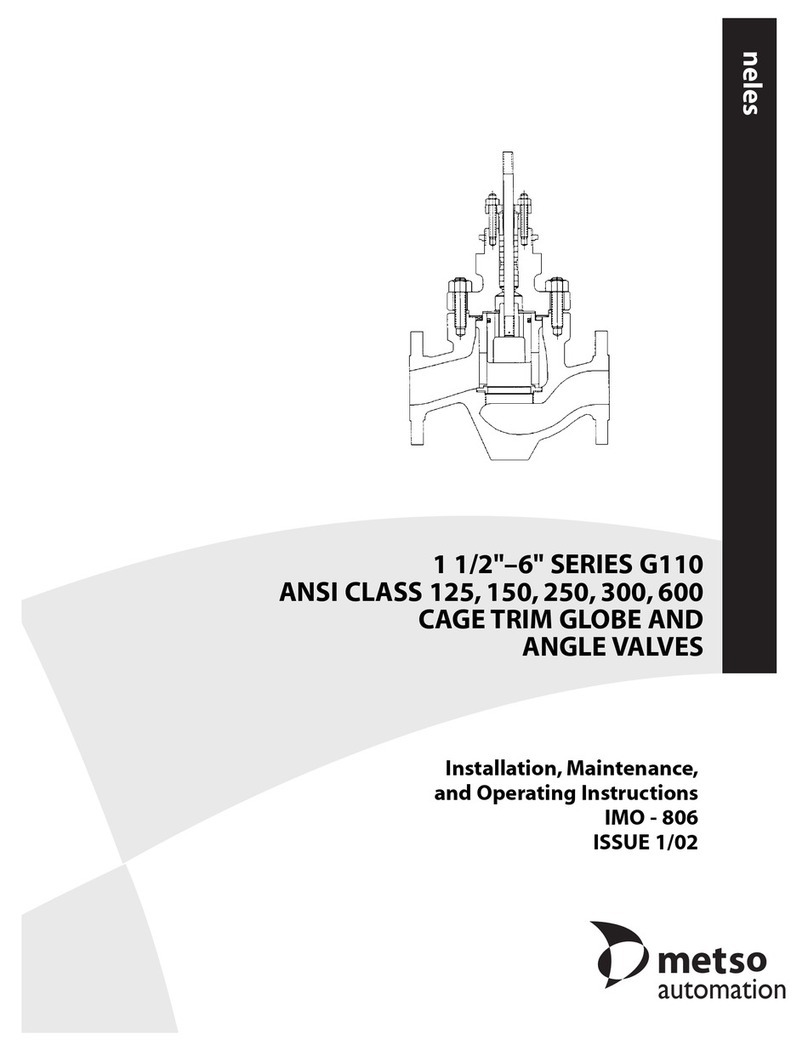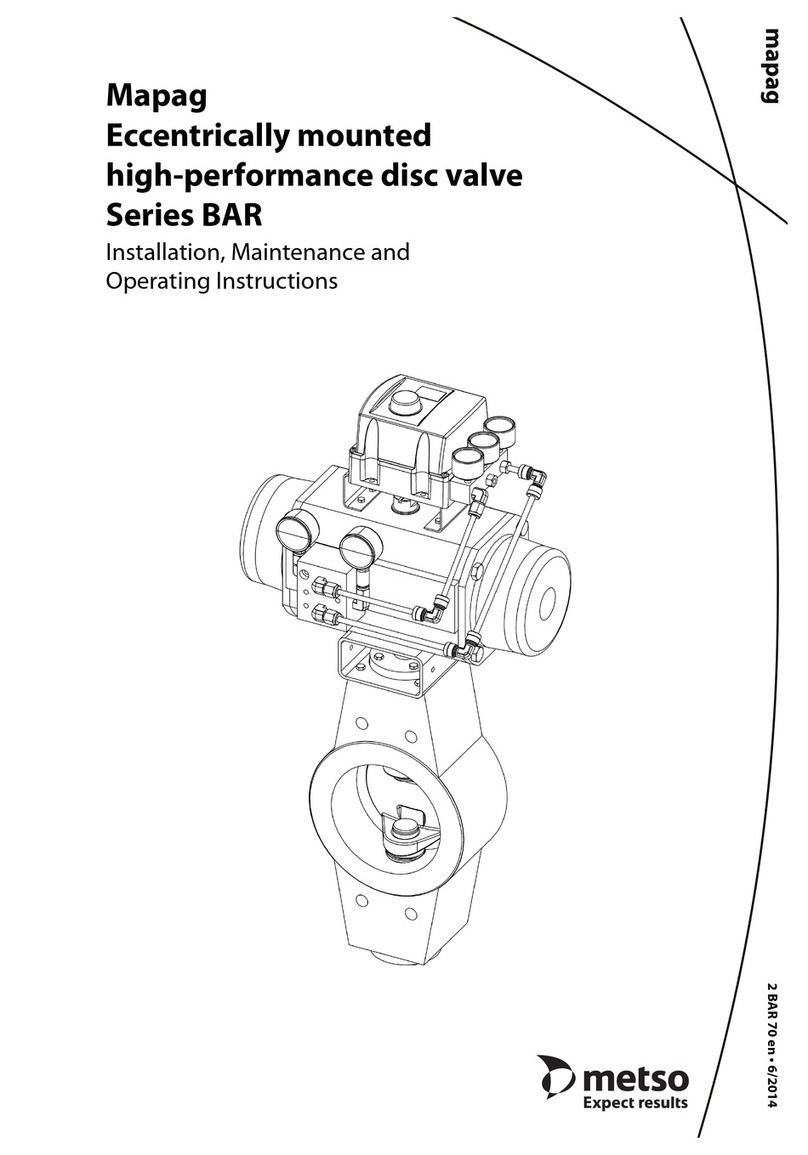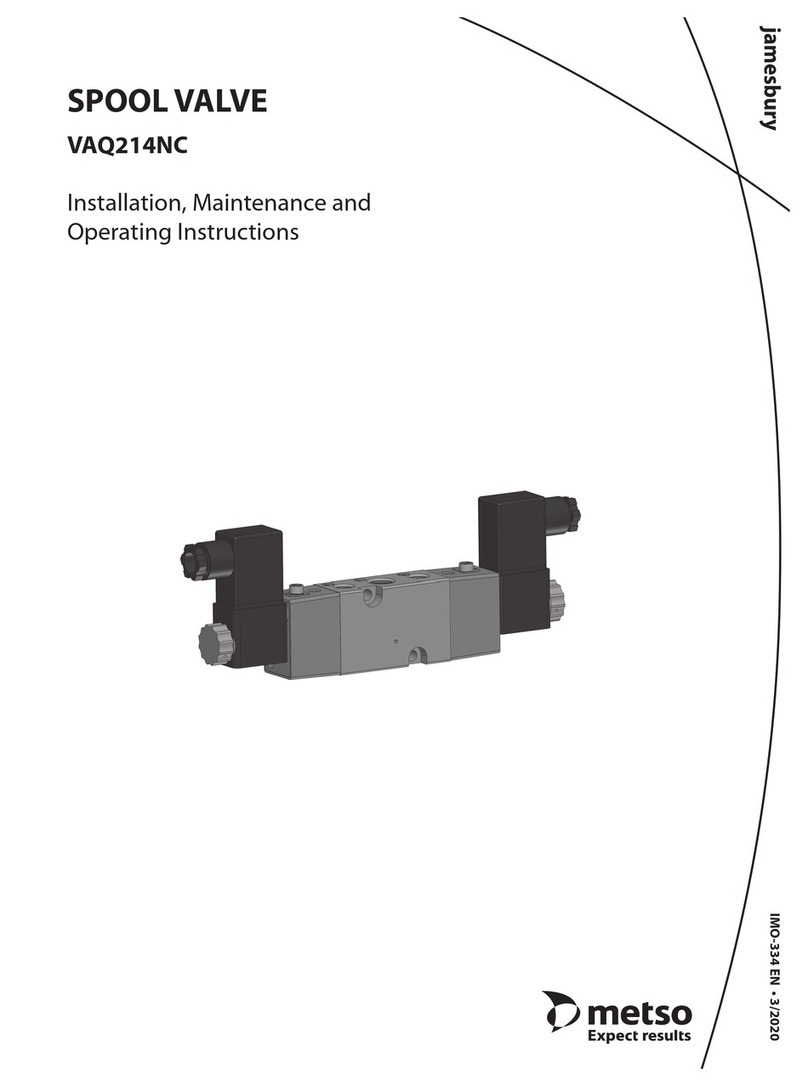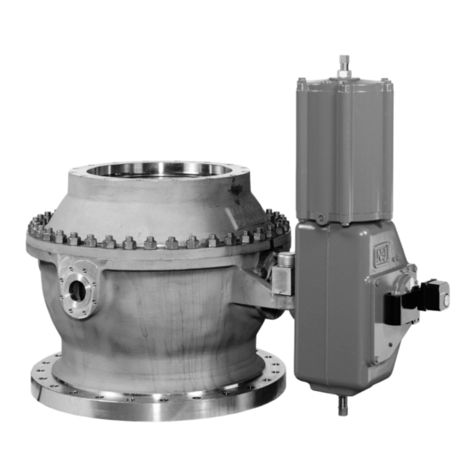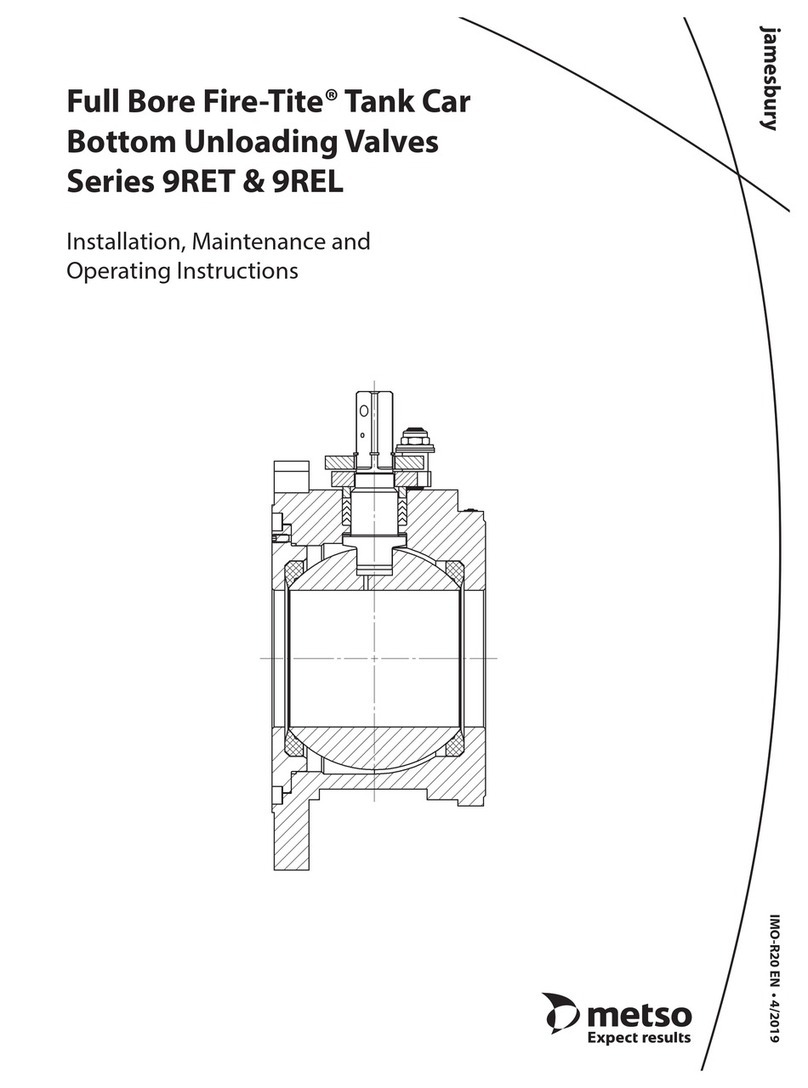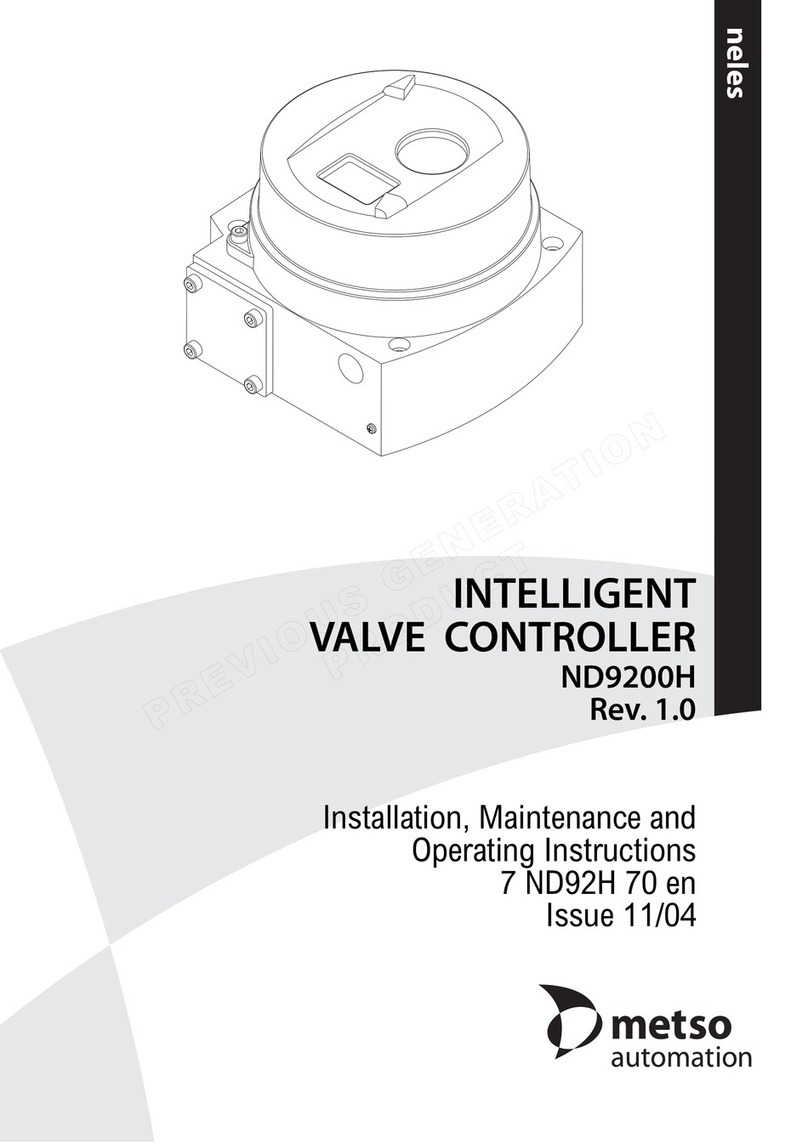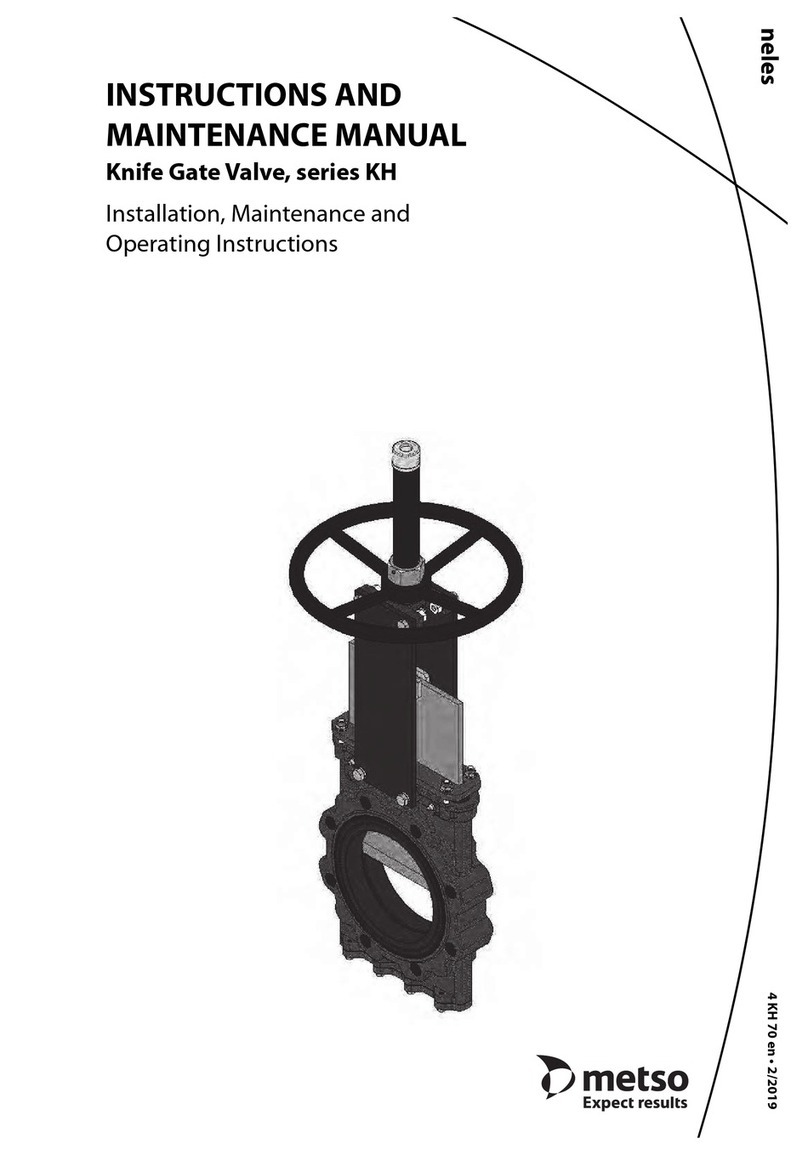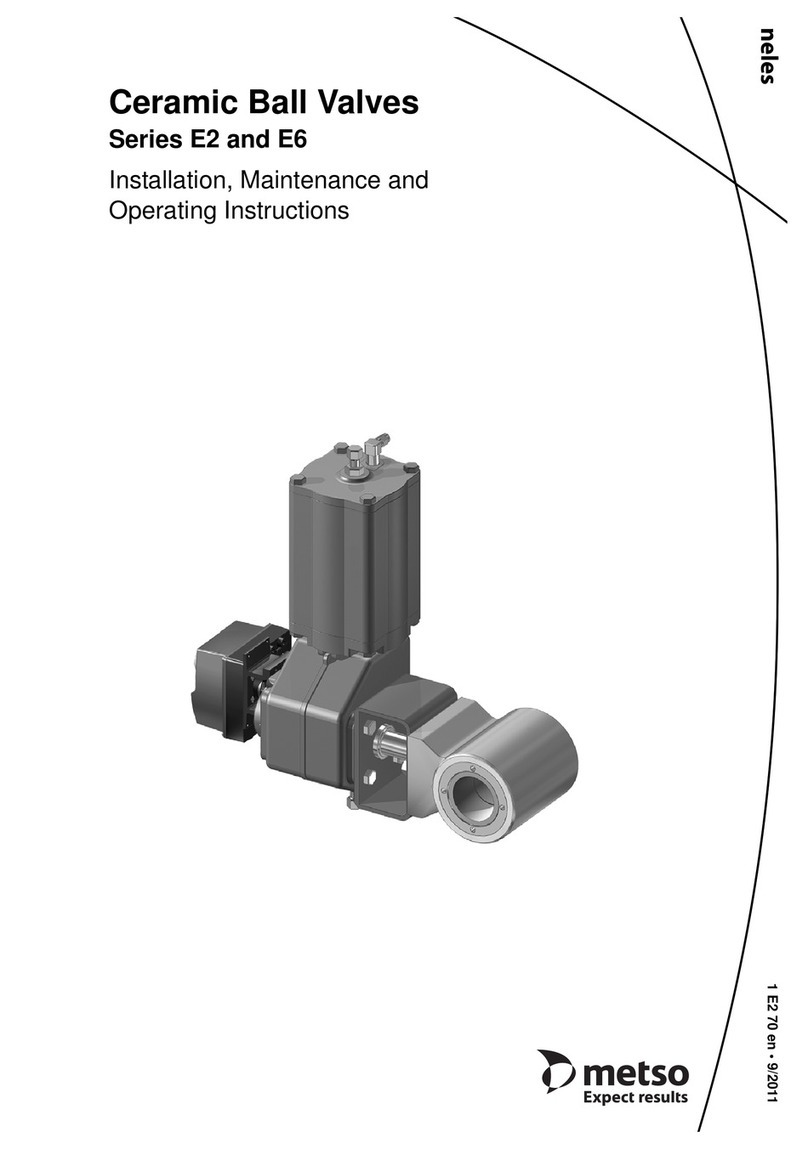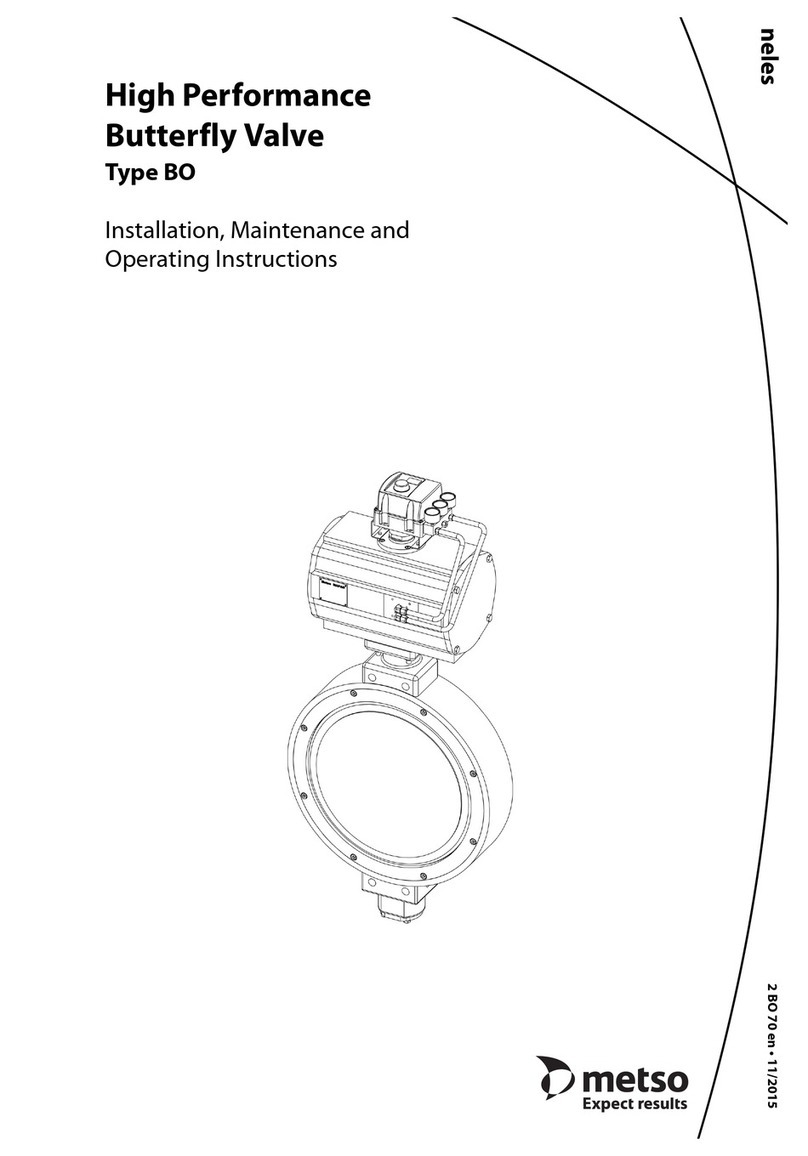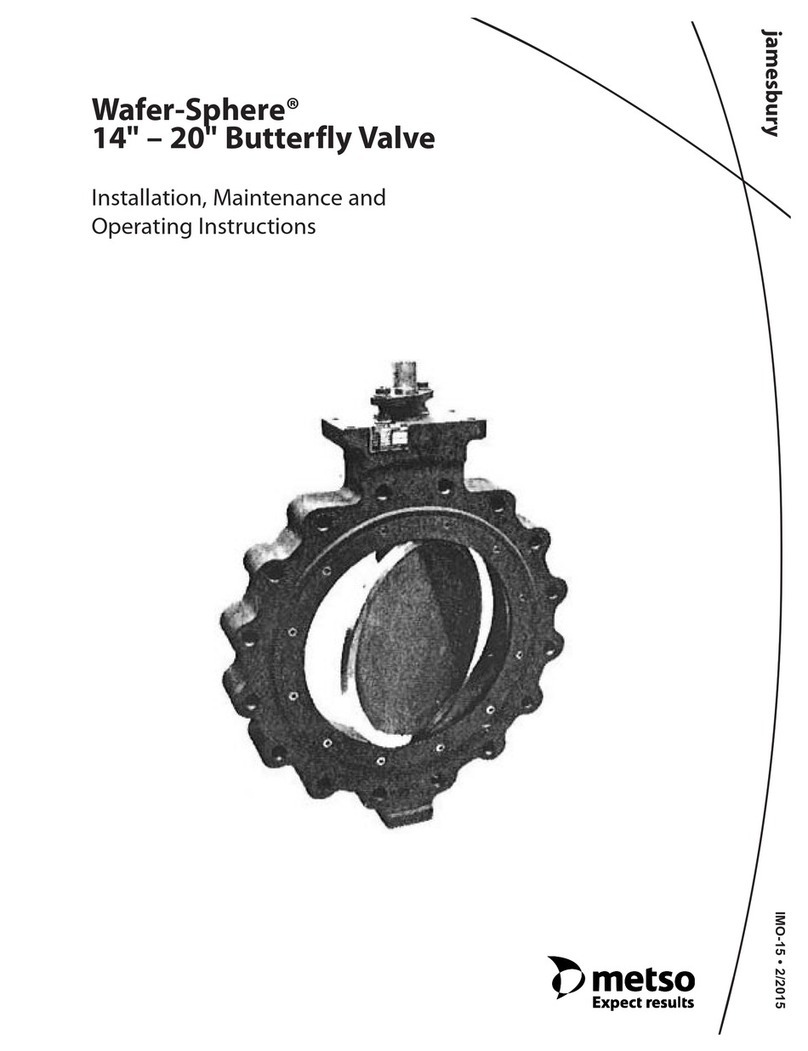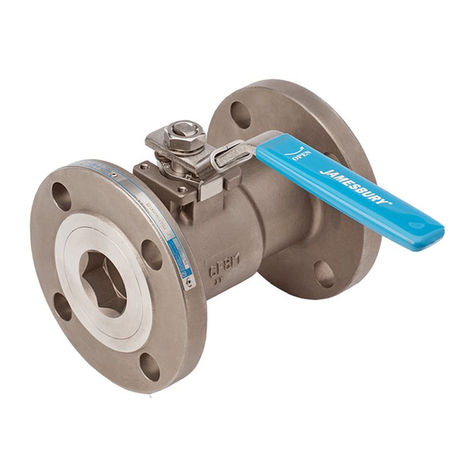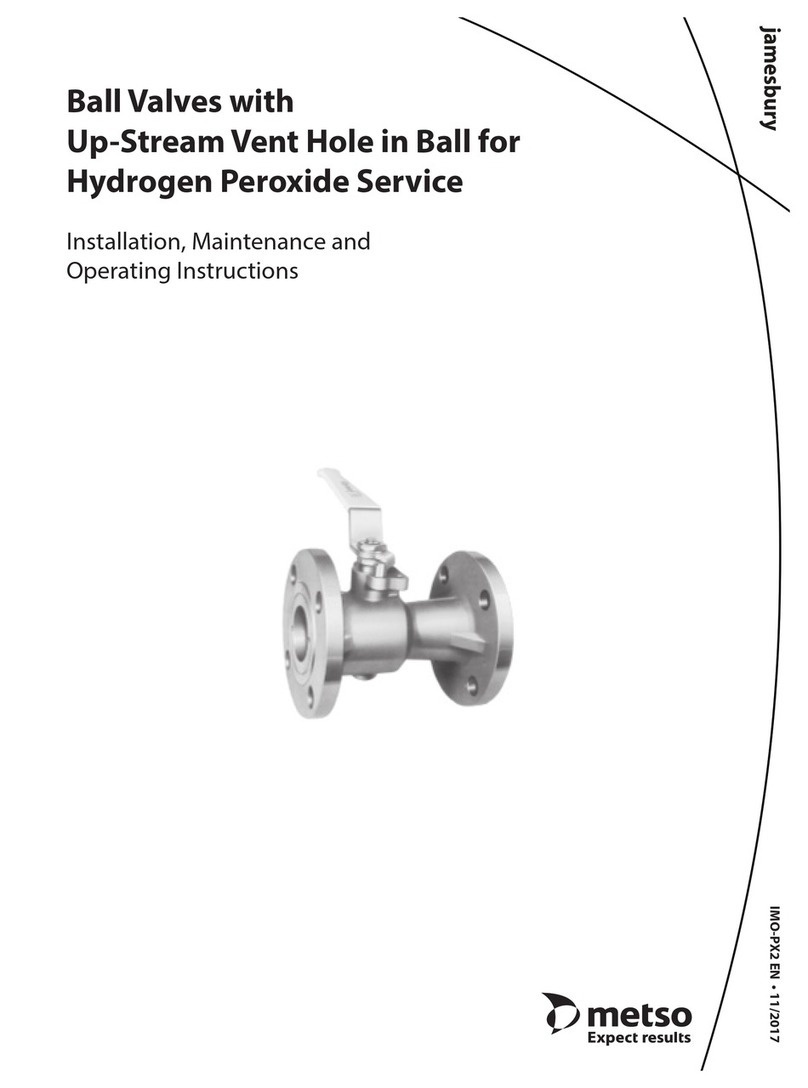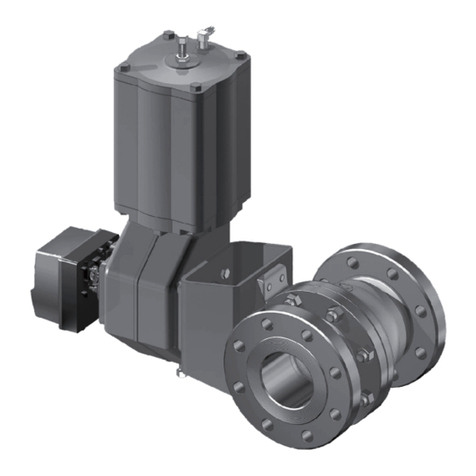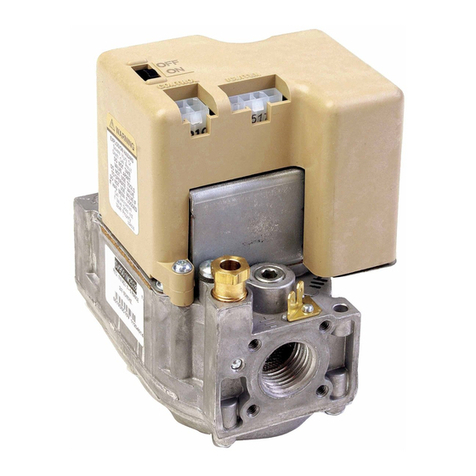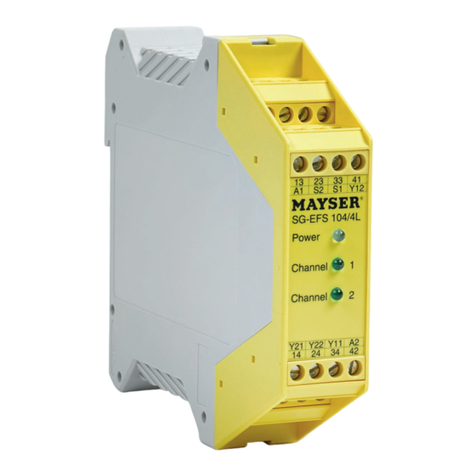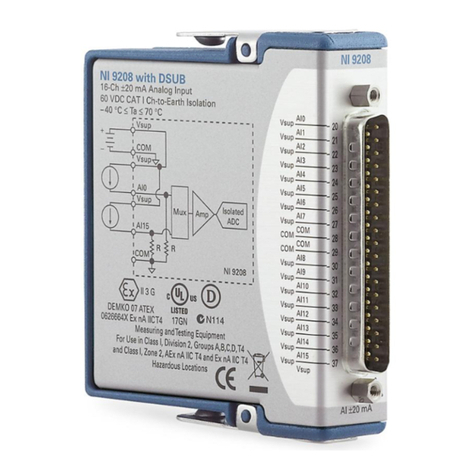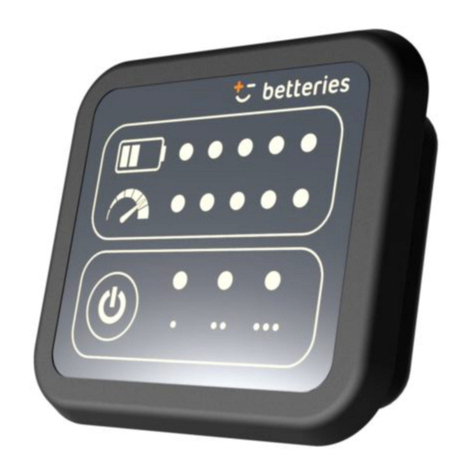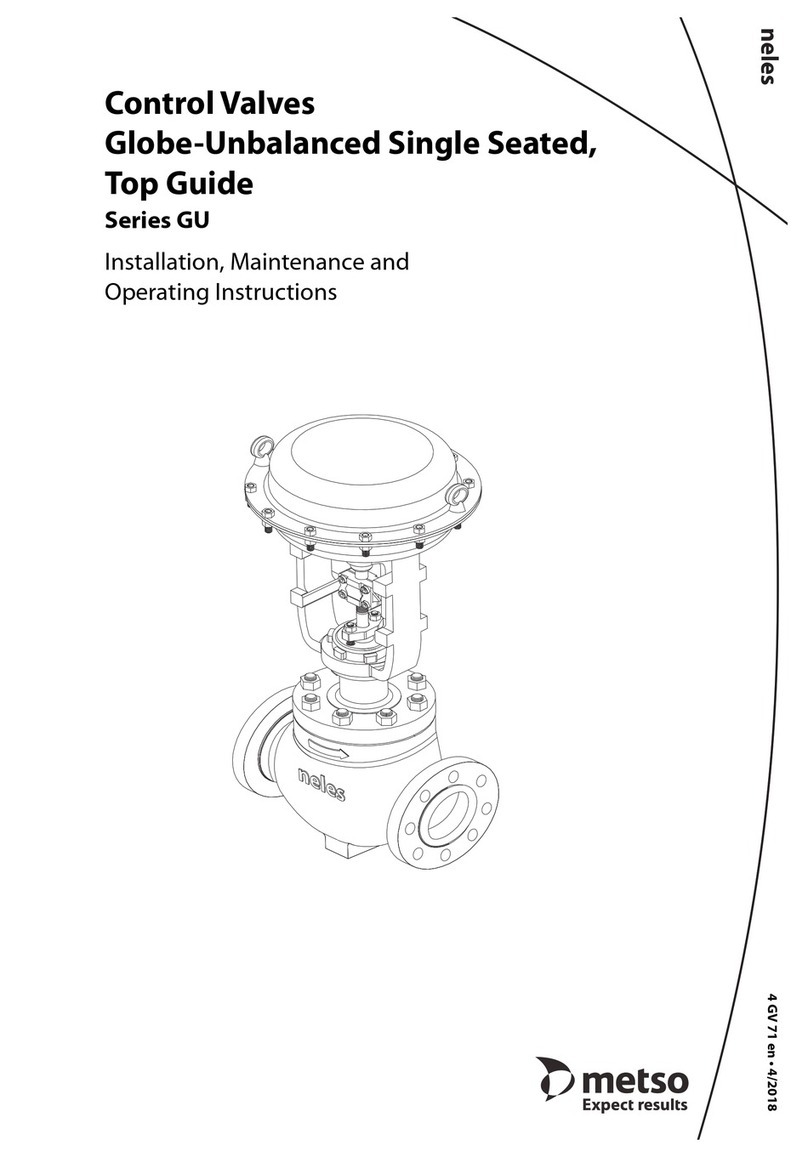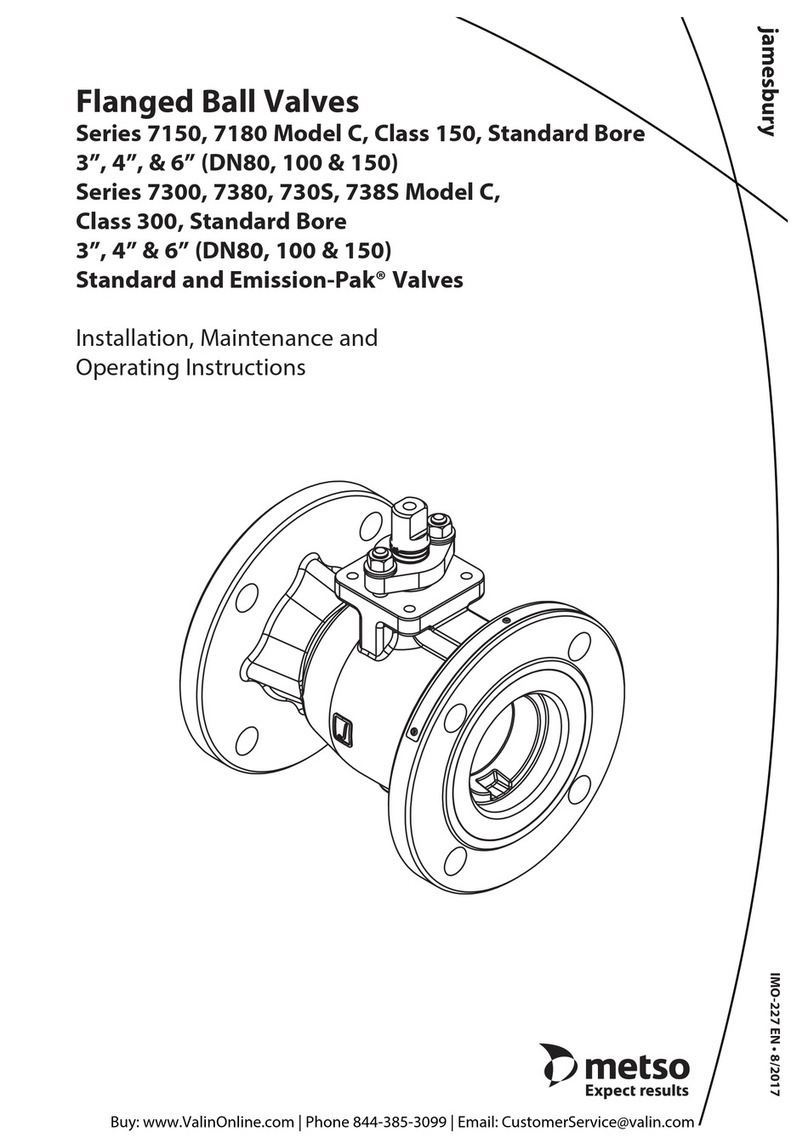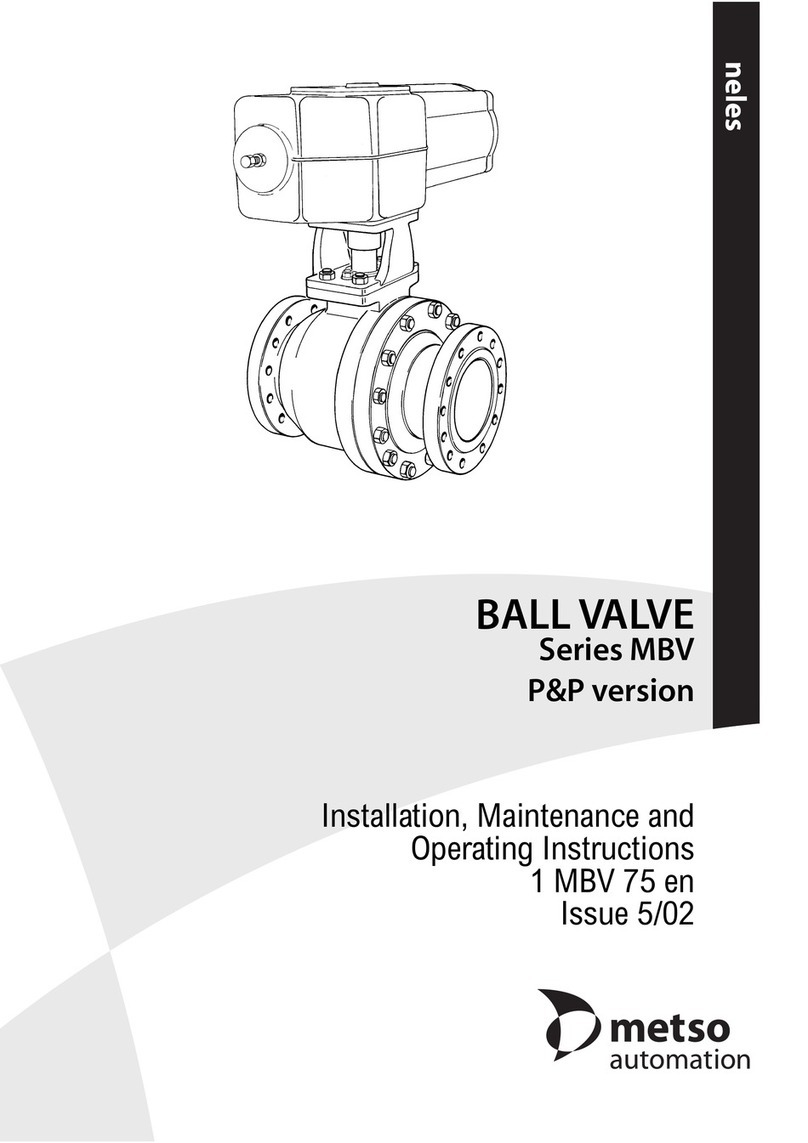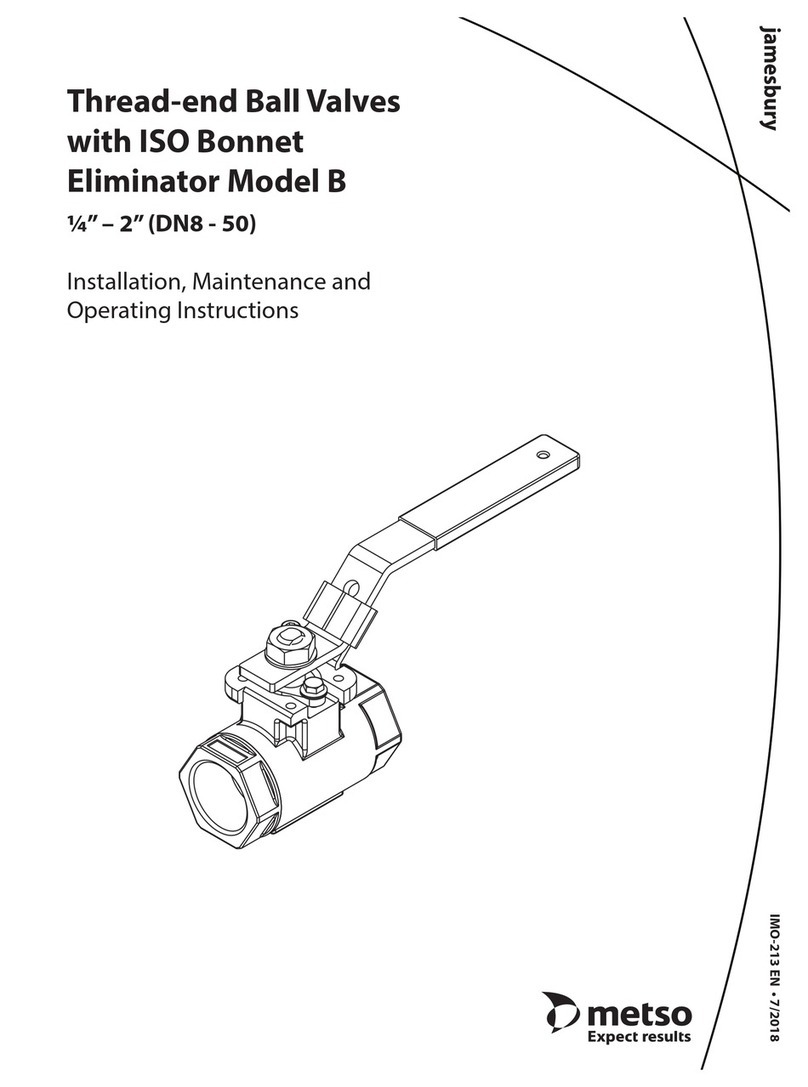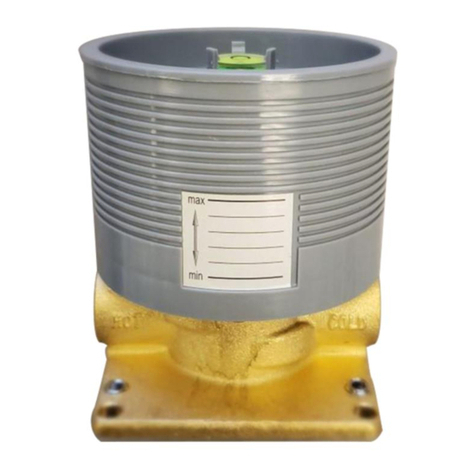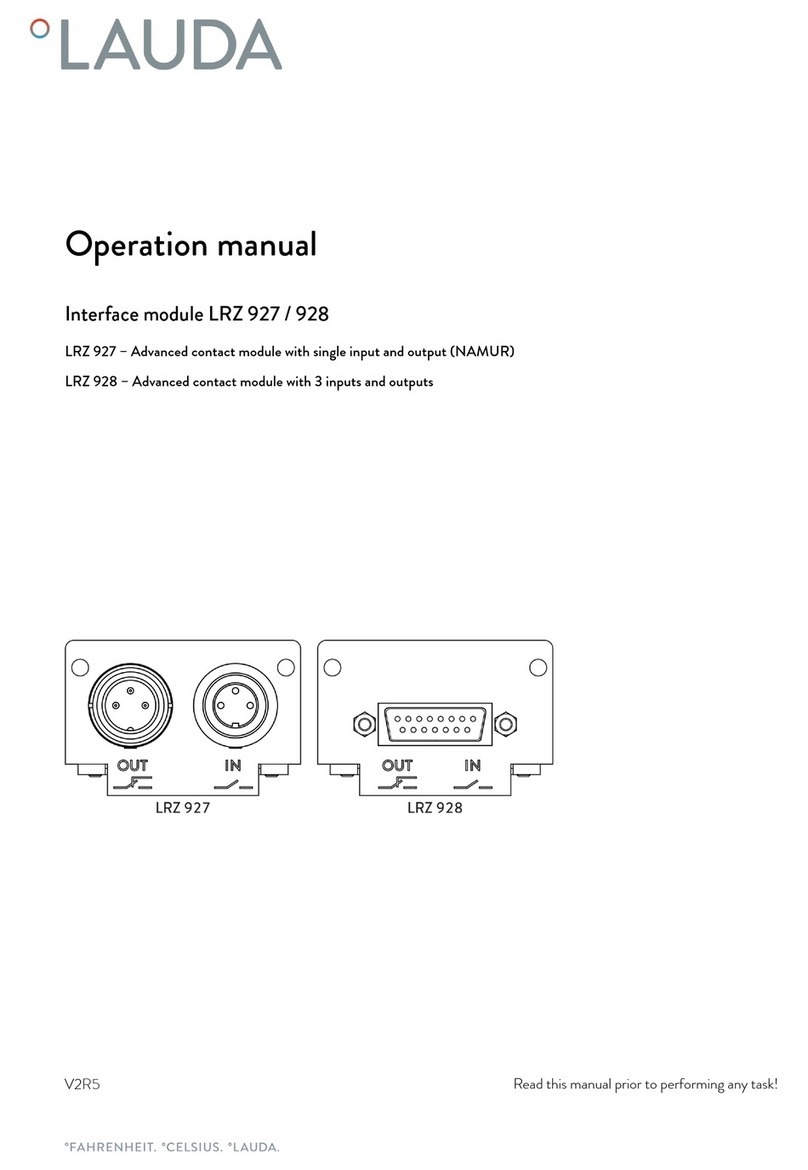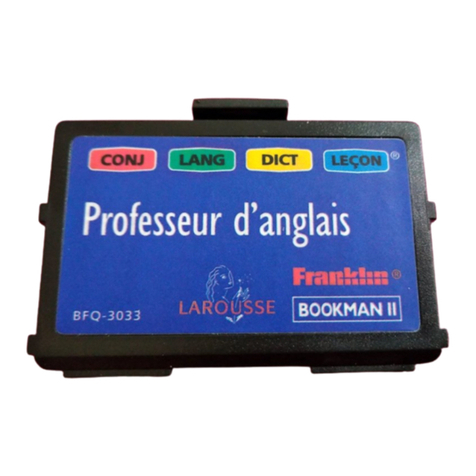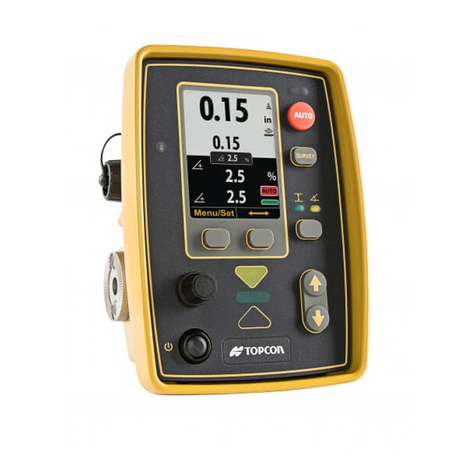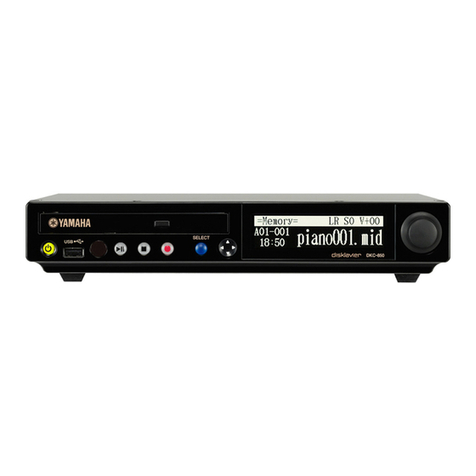
1 T5 71 en 5
2 TRANSPORTATION, RECEPTION
AND STORAGE
Check the valve and the accompanying devices for any
damage that may have occurred during transport.
Store the valve carefully before installation, preferably
indoors in a dry place. Do not take the valve to the
intended location and do not remove the flow port pro-
tectors until the valve is installed. The valve is delivered
in the open position, with the exception of valve pack-
ages where the actuator spring closes the valve.
3 INSTALLATION IN THE PIPELINE
Remove the protecting plates around the valve and
check that the valve is clean. Flush and blow the pipe-
line carefully before installing the valve. Foreign parti-
cles, such as sand or pieces of welding electrode, will
damage the valve.
Check that the pipeline is supported properly. Do not
attempt to correct any pipeline misalignment by means
of the flange bolting or welding of the valve. Do not sup-
port the pipeline using the valve as help.
An arrow pointing at the tight direction of a seat that is
tight in one direction (the most commonly used version)
is cast on both sides of the valve. This is usually the
flow direction. If the flow direction and the tight direc-
tion can be opposite to each other, the piping plan must
be checked for the correct position.
Check that the unbroken side of the ball faces the seat
when the valve is in the CLOSED position.
Install the valve in the position shown in the piping
installation drawing. The position code shows the instal-
lation position that should be used when the actuator
has been installed at the factory. The position code has
been given either on the specification sheet or in the
dimensional drawing of the valve.
There should be enough free space around the valve
so that the actuator can be removed and the valve dis-
mantled without detaching the valve from the pipeline.
Check that the indicator arrow on the actuator is paral-
lel to the ball flow opening.
The actuator must not touch the pipeline or any perma-
nent structures, because pipeline vibration may dam-
age it or interfere with its operation. If the pipeline
drawings show a support for the actuator, the support
must be installed.
Make sure that the valve is in the OPEN position when
welding a weld end valve into the pipeline.
Note! A valve equipped with a BJ actuator is in the
CLOSED position when it is not pressurized. Direct
compressed air into the cylinder to turn the valve open.
When welding a valve into a pipeline, protect the valve
from welding spatter, see Fig. 5. Always ground the
welding apparatus on the side of the pipeline.
4 COMMISSIONING
The gland packing may leak after long storage. If the
packing leaks, tighten it steadily until the leaking stops.
Do not tighten the packing unnecessarily as this will
increase the required torque and impair the control
properties. (More information about the gland packing
in section 5.1.).
Check that the valve has been installed correctly in
relation to the flow direction.
5 SERVICING
The valve can be serviced without removing it from the
pipeline. Servicing in a workshop is, however, recom-
mended whenever possible.
If the valve is removed from the pipeline, the body must
be supported for servicing with the stem standing
upright.
The numbers in parentheses refer to the exploded view
and the parts list on pages 12 and 13, unless otherwise
NOTE:
Valves with a carbon steel body may become badly
corroded on the inside if the inside is left damp during
storing.
CAUTION:
Never lift the valve or valve package by the actua-
tor, positioner, limit switch or their piping. Place
the lifting ropes securely around the valve body.
Fig. 4 Installation of the valve into the pipeline
Fig. 5 Protecting the valve during welding
CAUTION:
Observe the safety precautions listed in section
1.8 before starting work.




















